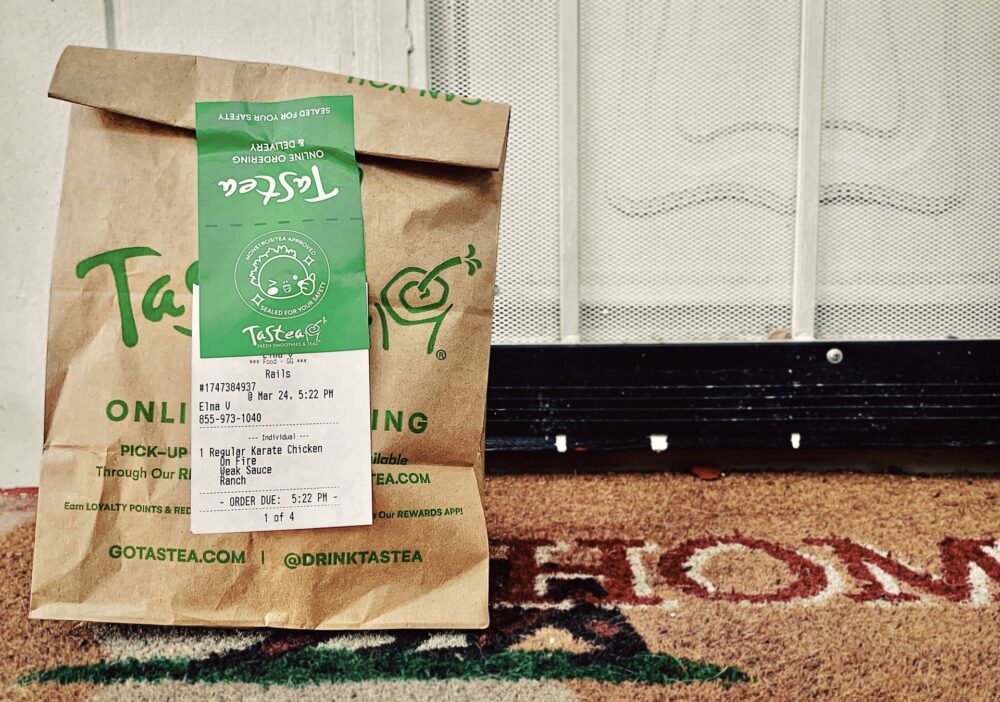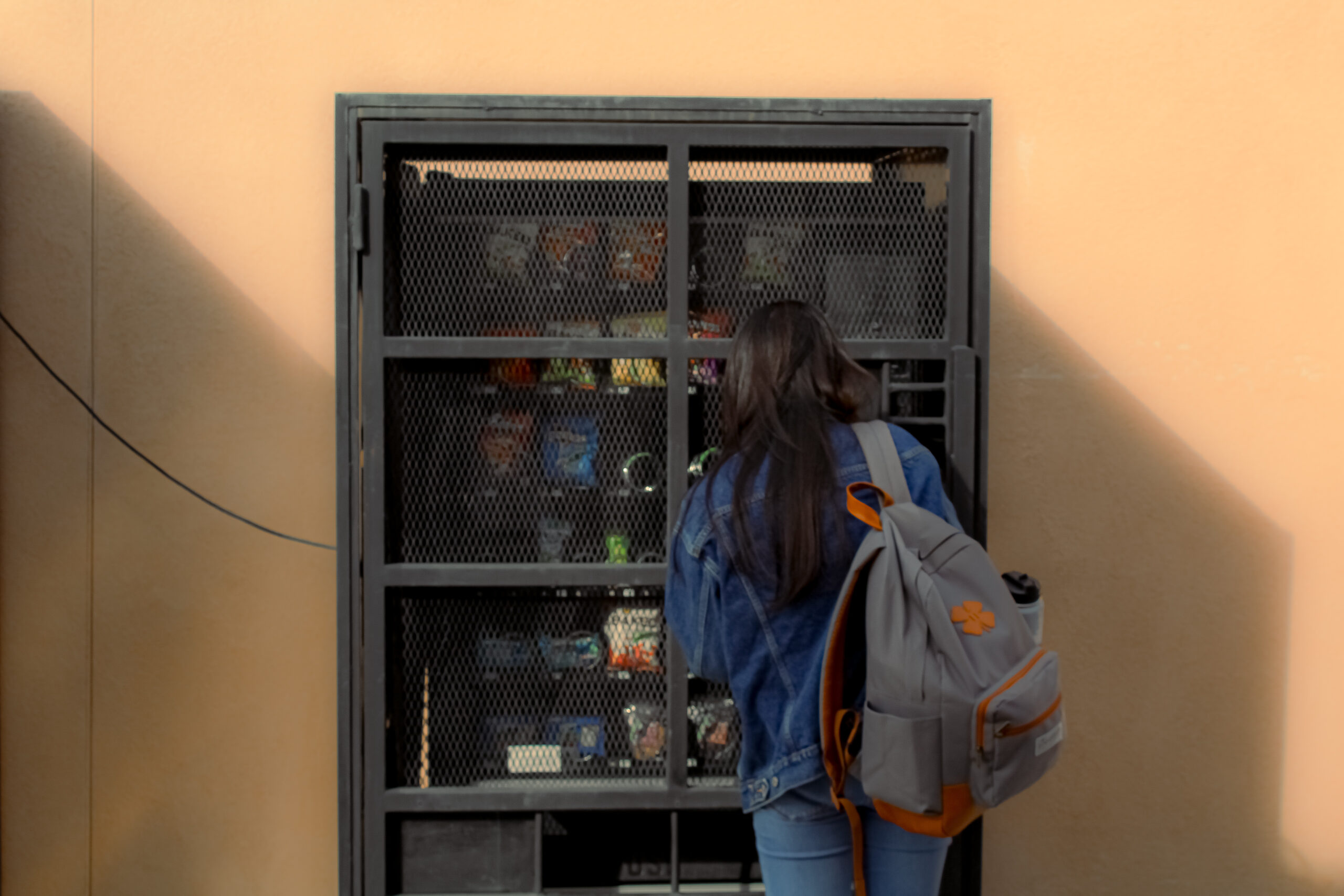
By Britney Tran & Hien Bui
When restaurants closed indoor dining due to the elevated risk of COVID-19, food delivery service became an integral part of keeping businesses afloat. The mass migration to platforms like UberEats, Doordash and Postmates has created new trends in the industry that seem to be here to stay.
As delivery becomes more potent, a reckoning with customers, businesses, and delivery platforms alike are already underway, creating new approaches and tensions that will set the tone for what this next decade of delivery has in store.
Food delivery has long been a part of our lives.
While our parents might’ve had the occasional pizza delivery guy growing up, we are purveyors of an endless amount of options, from ordering made at the click of a button to wireless money transfers. Numbers on a screen become food at your door and ever more contactless during the age of viral infection.
Food delivery apps have become a multi-billion dollar industry that seems to only be expanding in terms of both finance and influence. Limits had existed in restaurant availability and distances, but food delivery services were already experiencing rapid growth and widespread use pre-pandemic.
In 2019, analysts projected that 2020 would be the first year where over half of restaurant spending would be concentrated on takeout, delivery and drive-through services instead of traditional sit-down experiences.
At the end of 2020, restaurant delivery made double of what they had in the previous fiscal year, clocking in at $40.8 billion and exceeding the pre-pandemic estimate. Of that number, $20.6 billion was revenue from third-party delivery apps.
The pandemic has increased the popularity of food delivery apps.
The rationale is straightforward: when a pandemic moves everything indoors, delivery services, with business models that already relied on customers being at home, occupy new roles.
Contactless delivery became the bridge between restaurants and customers. Delivery became an essential part of life; at one point, the Centers for Disease Control and Prevention even recommended that Americans use online delivery to get their meals and groceries.
The food delivery landscape exploded in response to the high demand. As the end to the pandemic still appears hazy at best, many corporate interests are taking part in the frenzy motivated both by rapid growth and the established consumer base that millions staying home offer.
Recognizable platforms changed operative hands and smaller start-ups rushed to fill delivery niches that major contenders didn’t cover. Amazon-backed delivery service is making international headway. Chains like Chipotle are investing in similar delivery ventures.
However, this trend rests on ultimately shaky standing.
Profitability isn’t a guarantee in this business, even for juggernauts like Doordash. The competitive market also inspires a form of competition in its customers—who weigh platforms’ delivery costs, options and services against each other—and, justifiably, have little loyalty to the apps themselves. The fluctuating consumer base poses bigger challenges as people start thinking again about post-pandemic life amidst the vaccination efforts.
After a year indoors and in possible aftermath sans masks and social distancing, people are likely to forsake delivery with in-person dining on the table. Just as likely is the chance that consumers will feel slow or unable to change quarantine habits, namely the reliance on easy delivery services.
The future of delivery will have to pay attention to the adaptabilities of both the industry and the customer.
Delivery apps also currently face pushback from customers, restaurants and regulatory agencies. Numerous Orange County locales are considering crackdowns on food delivery fees, with Buena Park being the latest to implement the restrictions in February.
The fees disincentivize businesses and customers; the former loses significant revenue in their agreement with the platform and the latter makes up the costs in the delivery fees the restaurants implement to make up the loss. This exorbitant markup price deters customers and hurts restaurants who lose that business.
While the pandemic may have handed food-delivery companies an unprecedented business opportunity, the transition from all sales to takeout and delivery remains a challenging one for restaurants using third-party delivery providers.
The truth of the matter is that every delivery sale is a money-losing proposition for restaurants. With delivery sales being 70-80% of total restaurant sales and delivery companies now taking 18-20% of restaurant revenues, profit margins are falling well below the national average of 8-10%, posing a threat to incremental incomes.
Aside from profits, restaurant owners have also complained about delivery people being the face of their product. When the food leaves the restaurants, the eateries face a battlefield outside of their control as drivers, representing them, deliver food that remains in the restaurants’ accountability. Some outsourced platforms have even been accused of listing restaurants without the owners’ permission and oftentimes, food delivery apps will publish menu items and prices that are incorrect or out of date.
Despite the challenges, food delivery isn’t leaving anytime soon.
The pandemic gave the food delivery model an ideal environment for expansion. With this baseline set, platforms can expand to a myriad of other ventures and situate themselves post-pandemic.
Yet, the heightened success came at the expense of restaurants, creating tentative balances between businesses and apps that can harm the customer as well. We are at an impasse but, with a post-pandemic future growing more tangible by the day, the industry is on the edge of great change. It’s impossible to predict how the delivery landscape will look, but what’s certain is that the model is here to stay and will continue to evolve as it does so.





